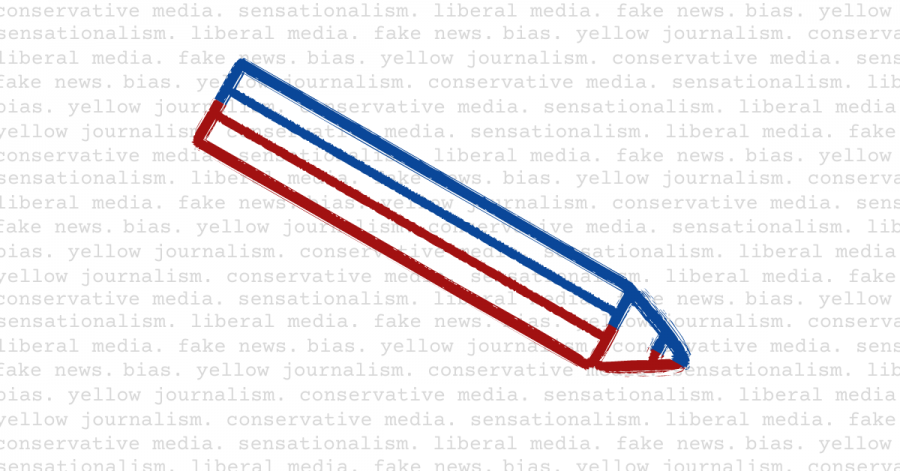Painted Blue
Journalism and activism are two separate entities that can tend to overlap
The presence of activism in journalism allows for the introduction of bias in an article.
November 24, 2020
According to the public, the media’s favorite color is blue.
In the news, we get to see the advance of socially liberal issues and learn about activists taking the lead. We hear their stories, become educated on their passions, and are handed resources on how to join their fight. While journalists have a role as a reporter, they take part in the activism as they amplify the activists’ voices and give them a platform to expand the reach of their message. But are journalists and activists mutually exclusive?
In short, yes. The role of a journalist is to report on the news with the intent of informing the public. They are meant to deliver facts while using quotes from their interviews to inject human spark. Quotes deliver opinions, comments, and reactions from interviewees, bringing a point of view to the article that the journalist cannot introduce themself.
As a student journalist, I see my role within a school as a storyteller. I have the ability to interview students and staff about their interests and feature them to highlight what makes them unique. I can conduct interviews on the personal lives of my peers, creating awareness of the issues that affect them. I can recap the events of our school, documenting any happenings that could otherwise just become a memory.
Journalists play a role on any level they are a part of, whether it’s education, politics, or sports. But they cannot implement every aspect of activism in their reporting. For example, they cannot express support for a particular politician in their writing. Even if that politician has a platform that I agree with, directly supporting them in an article would be an example of bias.
Bias is a highly disputed facet of journalism, as it is a dangerous tool with the power to sway the opinions of readers. It is only intended to be used in opinion articles, to show the journalist’s perspective derived from their personal life experiences and values. Historically, bias has a negative effect on journalism, with eras of “yellow journalism” where reporters sensationalized the news for attention. Even today, journalists can have a bad connotation and are deemed untrustworthy.
Often portrayed as the “liberal media”, the world of journalism is seen as a realm not welcome to those of differing opinions. Accusatory fingers are pointed towards news outlets like CNN or MSNBC for having a liberal bias. On the other hand, outlets like Fox News and the Rush Limbaugh Show are known for being more conservative.
Supporting certain legislation and politicians is a key part of activism, as it propels their desired policies. Groups like The Sunrise Movement publicize their endorsement of certain politicians, like Alexandria Ocasio-Cortez, that meet their standards.
Naturally, journalists are going to have opinions on the stories they write. Especially while being exposed to data and quotes, they have enough information to formulate their own thoughts. So even though they cannot express it in an article, it is important to note that journalists are also people. They still reserve the right to express their beliefs and advocate for them— just not in their work. As soon as they step out of their shoes as journalists, they can step into the shoes of an activist. In their role as a human being, they can stand up for what they believe is right and pursue solutions to any inequities they see.
Like any other profession, a journalist’s personal life belongs to themselves and they can have their own outlets to advocate for the issues they believe in. On their personal social media accounts, journalists can publicly support politicians and express their feelings towards their actions. They can don the merchandise of organizations and participate in marches and protests. They can vocalize their beliefs to their peers and engage in conversations discussing the activist topics they’re passionate about.
Journalists don’t have to waive their freedom of expression when they step into the newsroom. Instead, they have to maintain impartiality while they work. Journalism and activism work in tandem but are not the same ideas. While one can paint itself blue and the other cannot, both work to achieve a level of truth in the country, documented purely in black and white.













